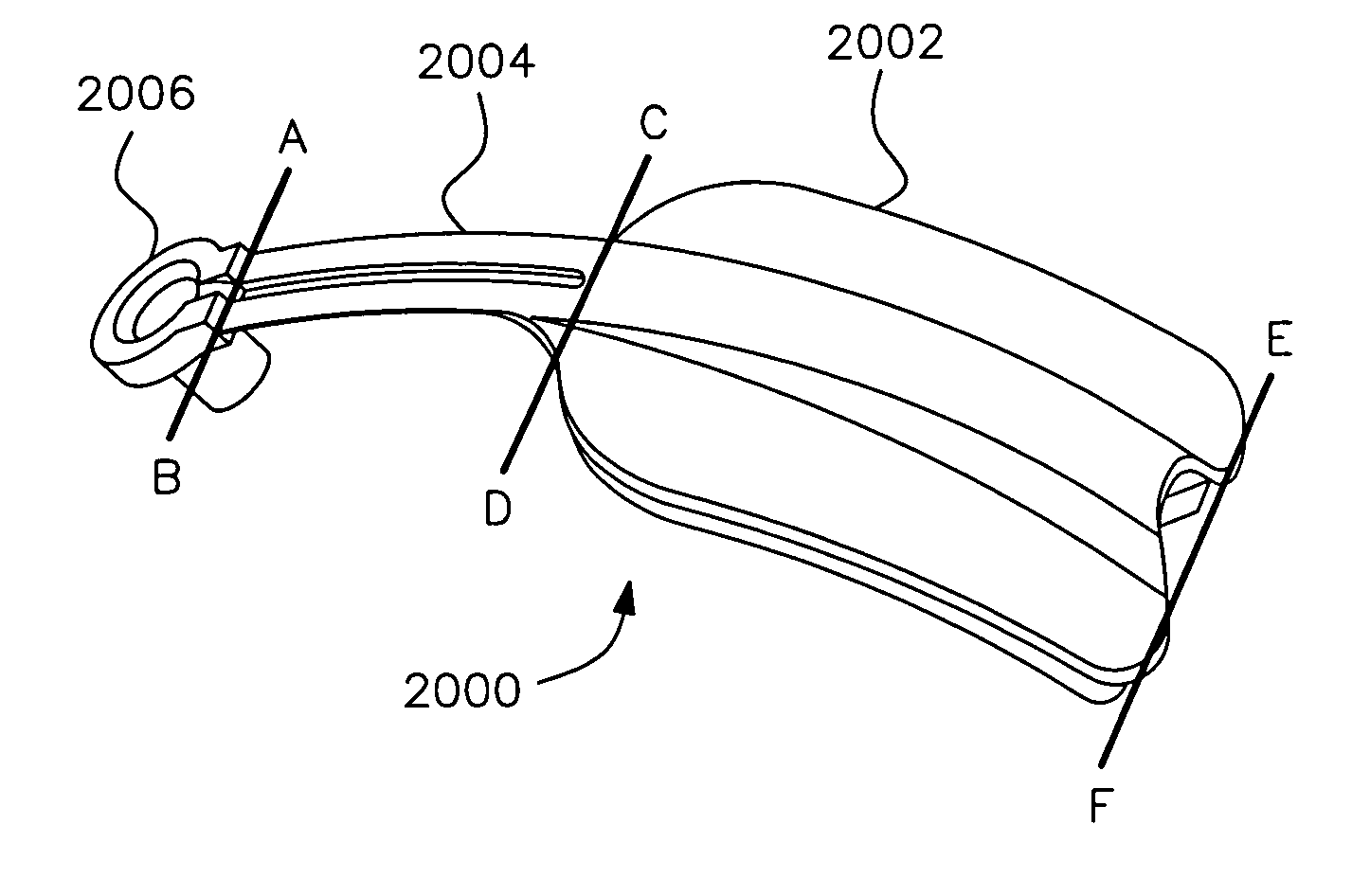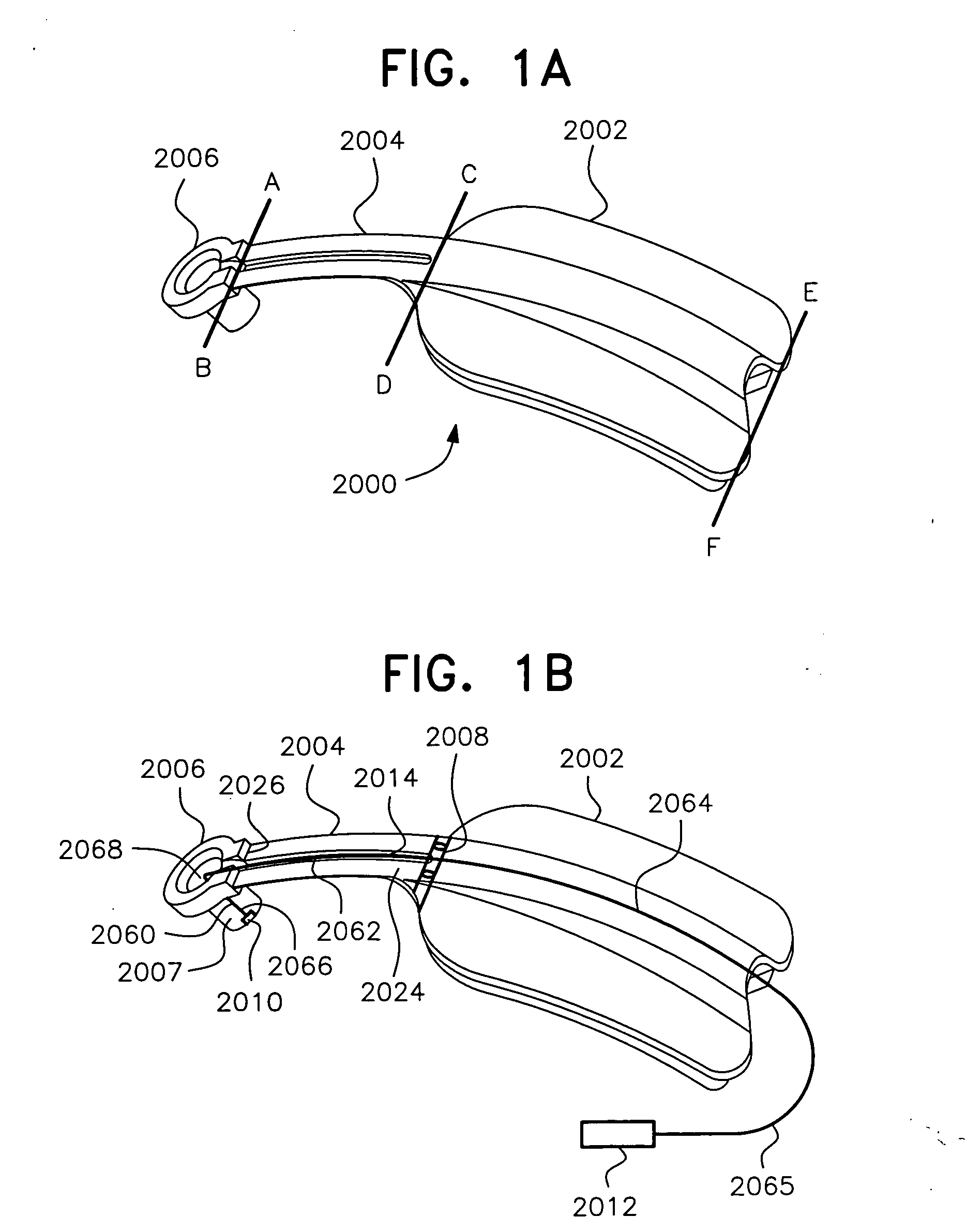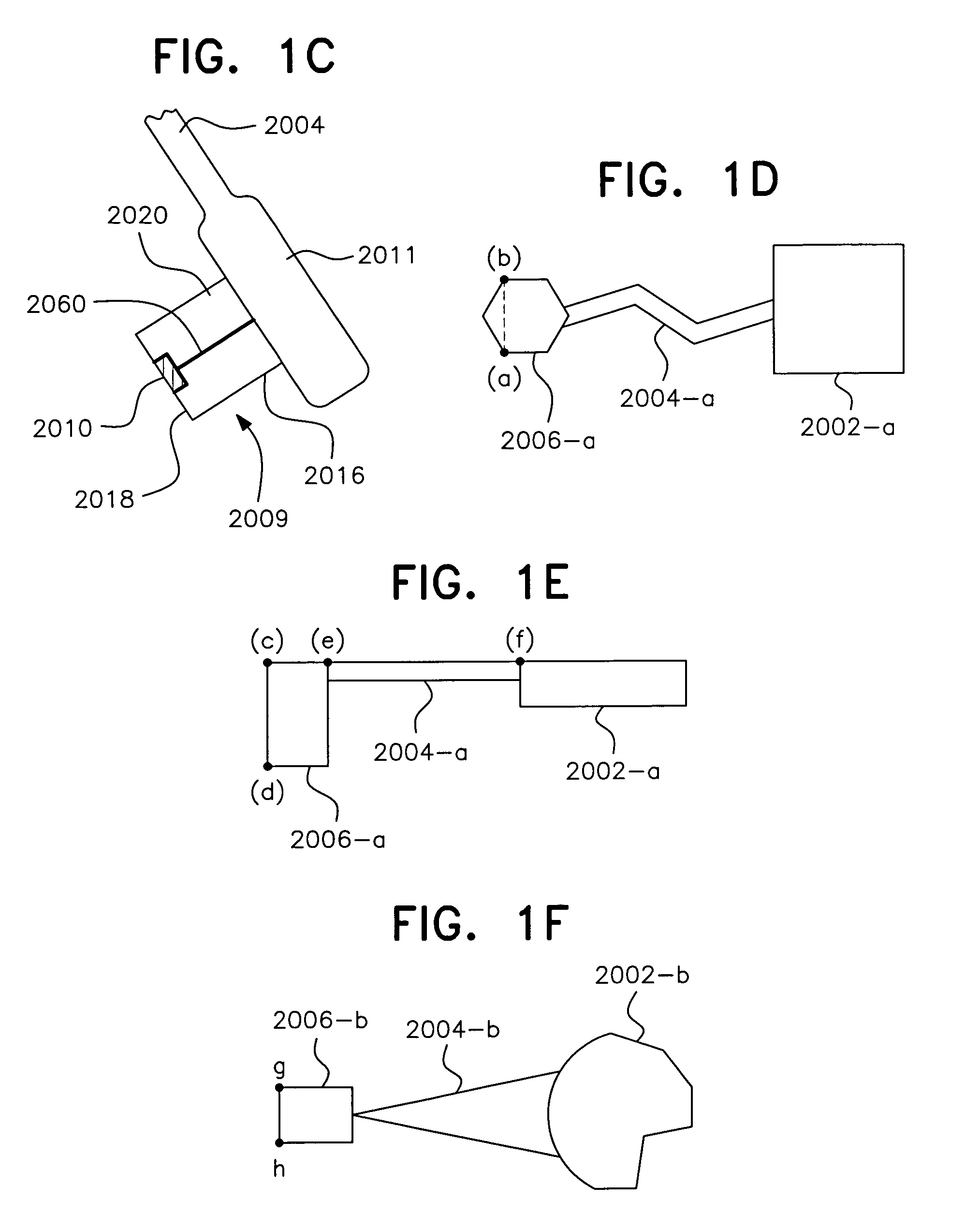[0331] Another
advantage of the present invention is that the
heating element does not need to reach high levels of temperature, such as 44 degrees C., since the tunnel area is extremely vascularized and associated with a unique
blood vessel which is terminal (which means that the total amount of blood is delivered to the site) in addition to having the thinnest skin interface in the
whole body, thereby allowing a lower temperature of a
heating element to be used for increasing
blood flow to the area. The preferred temperature of the
heating element is equal to or less than 44 degrees Celsius, and preferably equal to or less than 41 degrees Celsius, and most preferably equal to or less than 39 degrees Celsius, and even most preferably equal to or less than 38 degrees Celsius.
[0332] The electrochemical sensor of the measuring portion 2006 for blood gas and glucose analysis has the same specialized dimensions and shape described for the other sensors of the invention, in accordance with the present invention and specialized
anatomy of the BT and other surrounding tunnels. The device includes a measuring portion 2006 having a sensor, said sensor preferably being an electrochemical or optical sensor, and an associated heating element of specialized dimensions, with said measuring portion 2006 located adjacent to the BT or on the skin at the BT or other described tunnels of the invention. One of the objects of the invention includes providing a device of the described kind to be used at the BT for measurement of the
arterial oxygen pressure and other blood gases such as
carbon dioxide,
carbon monoxide,
anesthetic gases, and the like.
[0333]FIG. 2 illustrates a comparison between transcutaneous measurement of the
arterial oxygen pressure in the prior art and the present invention. FIG. 2 shows the skin 2270 with its three thick
layers, which is present in the
whole body. Methods of the prior art use this skin 2270, which has several thick
layers, namely
subcutaneous tissue (fat tissue) 2272, thick
dermis 2274, and thick epidermis 2276. Underneath this
thick skin tissue 2270 there are small blood vessels 2278.
Oxygen represented by small squares 2280 diffuses through the walls of the small blood vessels 2278, as indicated by the two small arrows in each
blood vessel 2278. Contrary to the thick and multilayered skin 2270 present in other parts of the body, which comprised the method used by the prior art, the method and apparatus of the present invention uses specialized skin 2290 at the BT 2282, which has a large vascular
bed 2284, no fat issue, a thin
dermis 2286, and thin epidermis 2288. A large
blood vessel and large vascular
bed 2284 present in the brain tunnel provides more stable and more accurate level of molecules and substances such as
oxygen level as well as the level of other blood substances such as glucose. Contrary to the method of the prior art which tried to measure substances in areas subject to
vasoconstriction and subject to the effect of drugs, the present invention teaches device and methods using a vascular
bed 2284 at the brain tunnel that is not subject to such
vasoconstriction.
[0334]
Skin 2270 of the prior art is thick and has a thick subcutaneous layer 2272 in comparison with the thin skin 2290 of the BT. In the method of the prior art,
oxygen molecules 2280 from
small blood vessel 2278, which is located deep in the body, have to cross thick
layers of skin 21742 (fat tissue), 2174 (
dermis), 2176 (epidermis and dead cells) present in said skin 2270 in order for said
oxygen molecules 2280 to reach a conventional sensor of the prior art. Accordingly, in the method of the prior art the oxygen 2280 from vessel 2278 has a long path before reaching a sensor of the prior art.
Oxygen 2280 diffuses through the wall of the
small blood vessel 2278 and through the
subcutaneous tissue 2272 to finally reach a thick dermis 2274 and a thick layer of dead cells 2276 at skin 2270, to only then reach conventional sensors of the prior art. As can be seen, the number of oxygen molecules 2280 drop drastically from around vessel 2278 to surface of skin 2271 as it moves along the long path of conventional
thick skin 2270 present in the body.
[0335] Contrary to the prior art, the method and device of the present invention uses a specialized and extremely thin skin 2290 of the BT, in which oxygen molecules 2280 from vessel 2284 have an extremely short path to reach specialized sensor 2000 of the present invention.
Oxygen molecule 2280 is right underneath the thin skin 2290 since terminal large vascular area 2284 lies just underneath the thin skin 2290, and thus oxygen 2280 rapidly and in an undisturbed fashion reaches specialized sensor 2000. This allows an undisturbed
diffusion of oxygen from vessel 2284 to sensor 2000 without any drop of the
partial oxygen pressure. Because the specialized skin 2290 of the BT produces a rapid and undisturbed
diffusion of oxygen (and other blood gases) to the special sensor 2000 of the present invention and the area measured is characterized by a natural condition of hyperperfusion, the present invention results in more accurate measurement than previously available estimates of partial blood gas pressures.
[0336] An exemplary transcutaneous blood gas sensor of the present invention consists of a combined
platinum and
silver electrode covered by an oxygen-permeable hydrophobic membrane, with a reservoir of
phosphate buffer and
potassium chloride trapped inside the
electrode. FIG. 2A shows a small heating element 2298, which is located inside the silver
anode. Oxygen 2280 diffuses through the skin 2290 and reaches sensor 2292 wherein a reduction of oxygen occurs generating a current that is converted into
partial pressure of oxygen. It is understood that other substances can be measured. Exemplarily,
carbon dioxide can be measured with the invention, wherein
carbon dioxide molecules diffuse across a permeable plastic membrane into the inner compartment of the
electrode where the molecule reversibly reacts with a
buffer solution altering the pH which produces a measurable
signal, said
signal corresponding to the amount of the substance or
partial pressure of the gas. A
processing circuit can be used to calculate the
partial pressure of the substance based on predetermined calibration lines.
 Login to View More
Login to View More  Login to View More
Login to View More 


